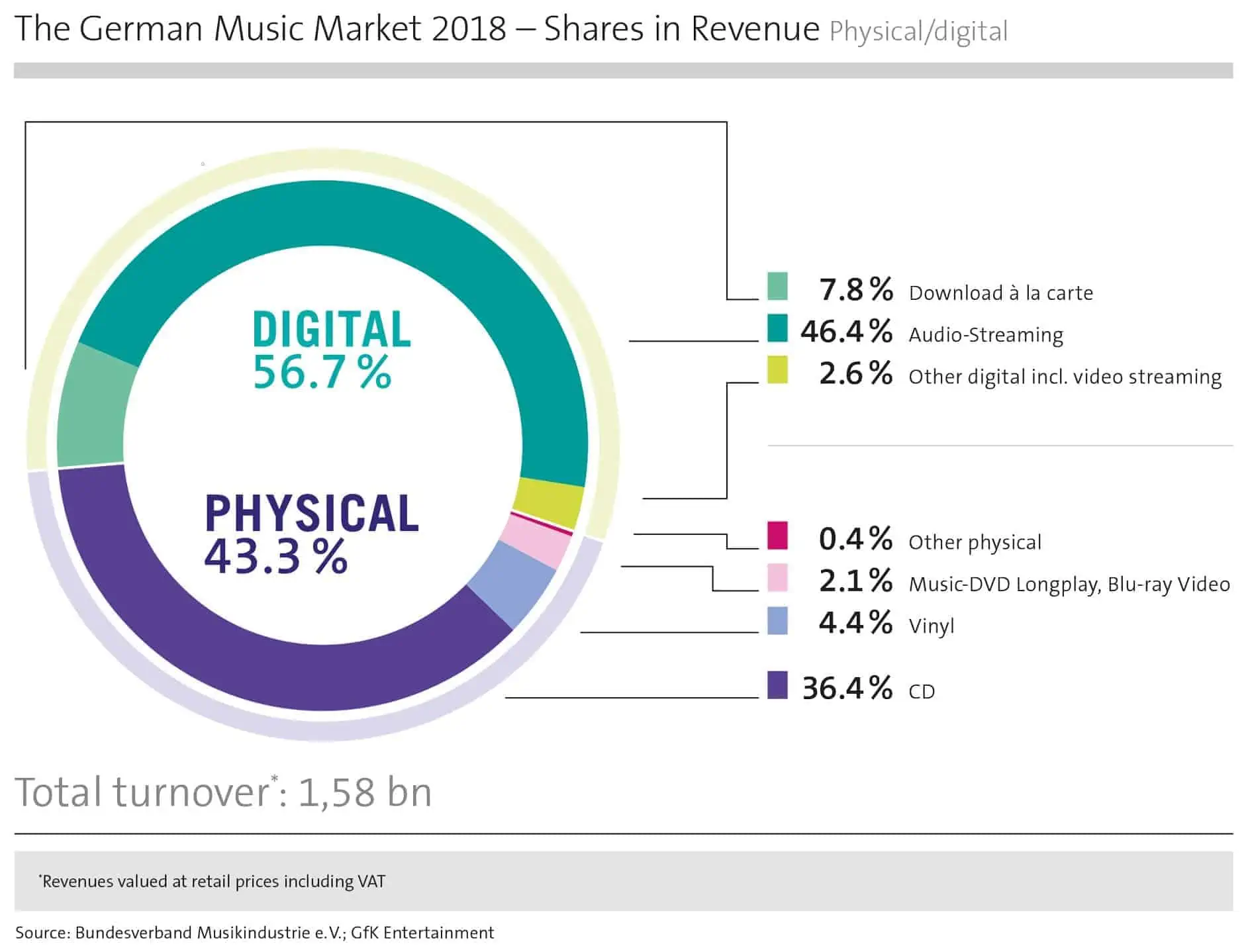
The BVMI, Germany’s recorded music industry association has reported no growth for the German music market in 2018 which achieved sales of €1.582 Bn – a small decline of 0.4% less than in 2017. Final figures for 2018 show that audio streaming, which continued to soar (+ 33.5%), now accounts for 46.4% of the market with CDs still the second strongest seller with a market share of 36.4% despite a decline of around 20%. Downloads contributed 7.8% of sales and vinyl LPs increased 5.2% to achieve a market share of 4.4%. Digital now makes up the majority of sales for the first time with 56.7% of the market and physical sales contributing some 43.3%.
BVMI Chairman & CEO Dr. Florian Drücke said, “After its previous four years of growth, industry turnover has now had its second year at a steady plateau level. This is not unhappy news. In fact, the German music industry continues to hold the course as it moves through a major transformation phase. This stability is remarkable considering that we experienced a 20% decline in sales of CDs, a media format that still contributes significantly to industry earnings and is therefore tremendously important for the industry’s overall balance sheet. We owe the stable market to the ongoing substantial growth in audio streaming, which experienced a 33.5-percent increase from an already very high level, thereby demonstrating its widespread acceptance among fans. This is a very good sign for the coming years, as it indicates users’ increasing willingness to pay. The lion’s share of audio streaming revenue is indeed generated by premium subscriptions.”
Drücke continued, “A message to all of those who still think that user upload platforms should not be required to pay higher licensing fees: Recent studies show that fans spend about as much time listening to on-demand music from audio streaming as from video streaming services. And yet, this behaviour is in no way reflected by actual sales figures. In fact, while audio streaming is poised to generate a full 50% of industry revenues, music streamed through on-demand video services returns only 2.4% of revenues back to creatives and their partners. This reality is often forgotten in the current debate on copyright reform.”




